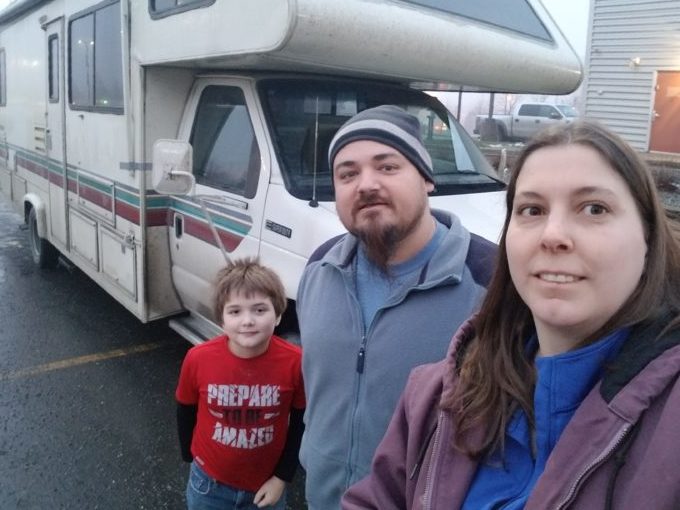
The very first photo of our very first RV! We had FINALLY done it! Within 5 days we were living in it full-time, with everything we owned, and traveling down the Alcan in the dead of winter.
Driving the Alcan. Or as it’s now known, The Alaska Highway. It’s the long aspiring dream of so many people. Retire and take an RV trip all the way to Alaska. The adventure of a lifetime! But I guess we’re not most people.
First, we’re FROM Alaska. Second, I think when most people envision their journey on the Alcan they think of bears, lush trees and waterfalls, and a summer filled with fishing, kayaking, fly-in sight seeing, glaciers, hiking… I think we did it wrong.
Our adventure on the Alcan lead us directly south, but only after going north to Tok, and the only sight seeing we did was through the half iced windows of our frozen RV. That’s right, folks, we did the Alcan in the dead of winter. All 1700 miles from Soldotna to Dawson Creek, with everything we owned in the world packed into our 27 foot Class C.
“HOW’S THE WEATHER, EH?”
Actually, we had a very good and rather uneventful trip, but I’ll break down a few of the details for you anyway.
First of all, it can TOTALLY be done. We lucked out that we only hit actual falling snow for one day, but with two simple words of advice you’ll be fine: SLOW DOWN and drive in daylight. That’s right, you don’t need chains, and a spare tire is a good idea. But if you are slowing down to the speed you feel comfortable with for whatever the road conditions are, you will be fine. Just make sure you are preparing yourself for the need to stop for any unexpected bumps or wildlife. That’s where the second rule comes in, plan your route and your day around the expected daylight. The only thing worse than unfamiliar roads and the chance of ever-changing weather is having to do it in the dark.
Now that is where our trip down the Alcan also differed from many others’. It took us 9 days just to get from Anchorage to Dawson Creek. It was a full 14 days of driving just to shoot through Canada and back across the US border, where-as many folks in the summer can do all of Canada in as few as 4 days, with the ability to drive 12 hours a day on good roads, with good weather, and plenty of daylight.
All-in-all the coldest December night we encountered was at Beaver Creek (-17 Fahrenheit / -27 Celcius), however the temperatures hovered between 0 and 17 above for most of the trip through Alaska and the Yukon.
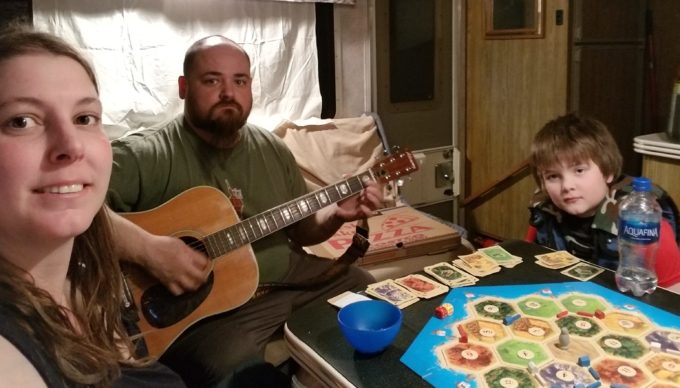
Treatment Time can be Family Time!
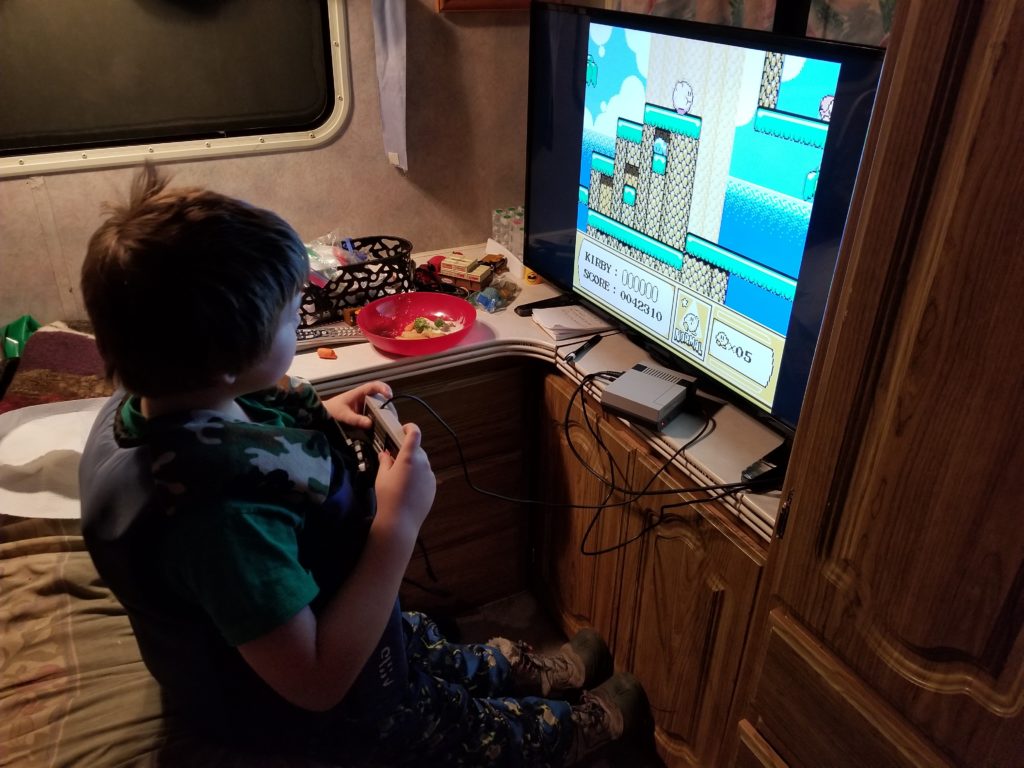
SQUEEZING IT ALL IN
Obviously 5 or 6 hours of available daylight had a huge impact on the number of miles we were able to drive in a day. Then you couple it with slower speeds. MUCH slower speeds at times. But this wasn’t the only impacting requirements our family has. Maintaining Nathan’s Cystic Fibrosis (CF) care means an hour and a half of breathing treatments daily. We’ve been fortunate enough to get him set up with a battery operated vest for two 30 minute sessions each day, but the nebulized pulmozyme requires half an hour of being plugged in daily. We can choose to do this either in the morning or the evening, but it still means that we need to either be plugged in or running the generator to accomplish the task.
While at home we had consistently picked the morning time, but while traveling we’ve had to consider those other requirements. This has meant that we either do it in the morning while we’re getting the RV cleaned up, packed up, ready to go, and some breakfast put together, or we do it in the evening after stopping and usually before dinner.
Did I mention we don’t wake very early? For the first part of our trip that didn’t matter. There isn’t any daylight to work with until 9 or 10 am, but then add the 30 minutes of treatment, house prep, and gas/propane fill-up and it was hard for us to get on the road any earlier than 11am. Most days we did around 160-200 miles. Though there were some exceptions, such as our 281 mile day from Fort Nelson to Dawson Creek, only to then lose an entire extra hour with the time change upon our arrival. The next day we did 260 from Dawson Creek to Whitecourt, but by that time we were getting far enough south that we not only had more daylight, but SUBSTANTIALLY better roads. We could actually feel the sun warm our faces for the first time all winter.
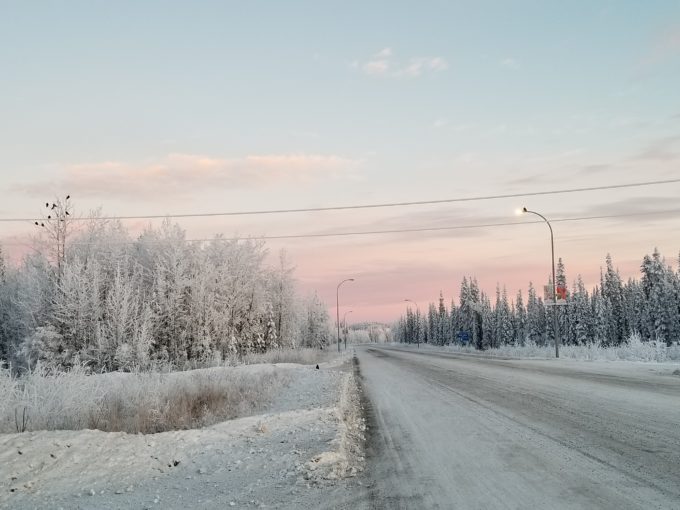
Sunrise in Beaver Creek, Yukon, Canada. -17 Degrees F. (-27 C)
A NEW EXISTENCE
Outside of the previously mentioned limitations it didn’t take too long to fall into some grooves for our new lifestyle. First, everything we own, (or could ever need,) was with us all the time, and since I packed it all I know exactly where everything was. Given, Andrew could have helped, but I’m a little better at sorting, and honestly not very easy to work with (or even along-side) when I’m doing a project like that, so for the solid 3 days it took me to get everything put away Andrew and Nathan pretty much just stayed out of the way.
It was decided that Andrew would do the driving for the most part, through to the Lower 48, but that didn’t leave me without any tasks! I took care of the final storage and stowing, (another few days for sure,) as well as the dishes, cleaning, homeschooling, navigating, and the toilet ‘situation.’ Let me tell you about that!
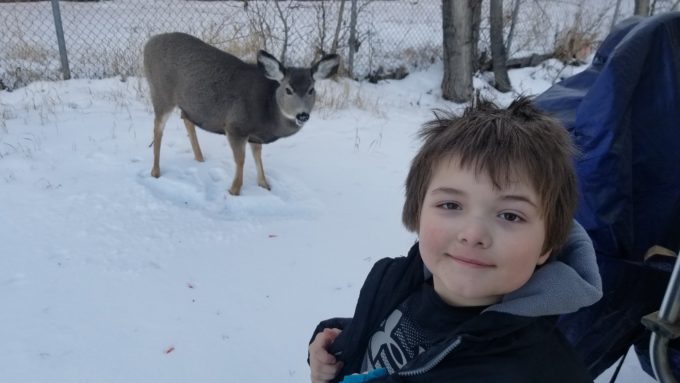
LIVING THE DREAM
Because we were traveling in freezing temperatures our RV House was winterized and completely dry. This means all dishes, washing, brushing, and potty needs were being done entirely without running water. Dishes and such were easy enough, just boil water and have bins inside each sink so the water doesn’t go down the drain. We have an electric kettle for sterilizing Nathan’s nebulizer parts that can be used anytime we were plugged in or running the generator, and we always have a pot and the stove.
We kept four 1-gallon jugs of water that were easy to fill at any gas station bathroom, and as long as the RV as a whole isn’t left to freeze overnight, they’d be usable at any time. In fact, 4 gallons proved to be just the right amount, as we usually used about 3 each day between us for drinking, cooking, and other needs.
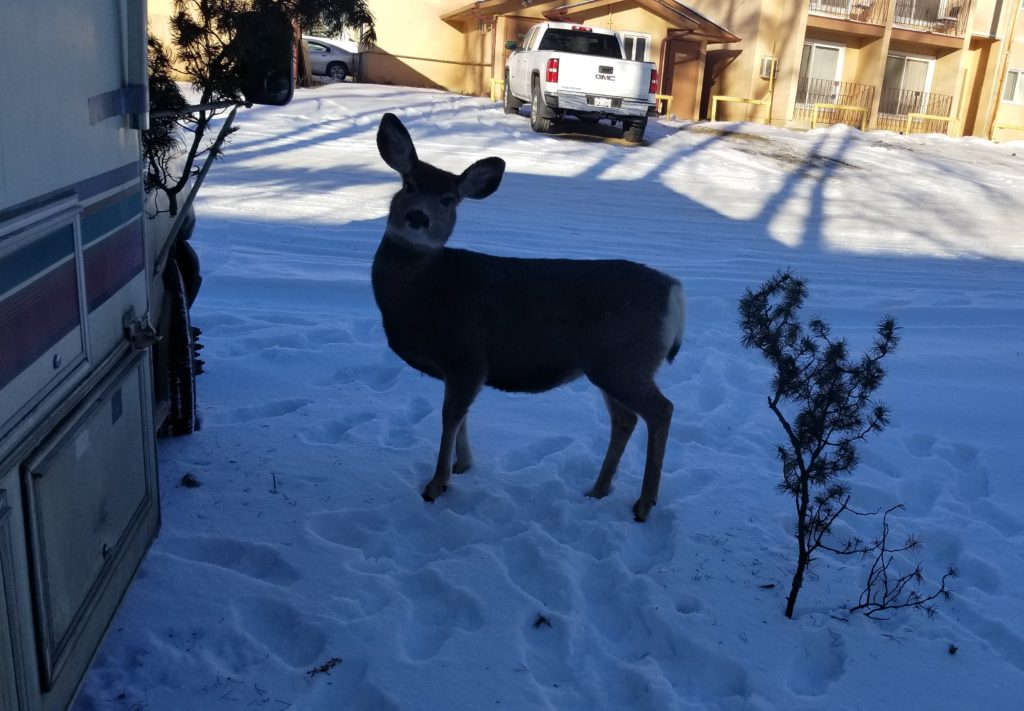
As for the toilet we started the first few nights using WAG Bags (Waste Alleviation and Gelling) which are designed for ‘Leave No Trace’ and “Pack it in, pack it out” type back country travel. These are basically just black trash bags with a bit of gelling agent in which you do your ‘business’ and then roll up the trash bag and place it inside a black ziplock bag. Though probably designed to be used only once or twice, they can be used by a person for several days as needed.
The idea is great, and they work well, but now there were three people with bathroom needs, and I only had a few of the kits. Although Andrew and I are capable of “holding it” until the next gas station, the young Mr. Nathan (with the lovely added CF bowel movements) is not going to be so accommodating. I very quickly devised a way to replicate the WAG Bags in a much more cost-efficient manner.
First you need trash bags. Though any trash bag will work, I’ll note right here that black trash bags are the preferred option. Next you need a package of diapers. Yup. Just think back to your toddler parenting days and get yourself some good-ol’ pull-ups, (or any other kind.) You simply line the toilet with the trash bag, cut the absorbent beads out of the center of one or two diapers and drop them in. You can add more bead-liners as needed and remove a bag anytime it gets full or too smelly. From here you simply tie it off, roll it up, and place it inside a gallon ziplock bag. This helps contain things and makes for better disposal at the next public receptacle. (Note: You don’t have to trim down the diapers, but RV toilets are not very deep and this offers more space inside the bagged-bowl.)
I know this may have been an “Ew Icky!” paragraph to get through, but I’m telling you this information may come in very handy sometime down the line if ever you find yourself in a less-than-adequate living situation.
Now given, we could have simply flushed each ‘flush’ with an equal amount of RV antifreeze, but to be honest, as messy as it sounds, the Homemade WAG Bags didn’t require both learning how to dump our black water tank for the first time and doing so in subfreezing temperatures.
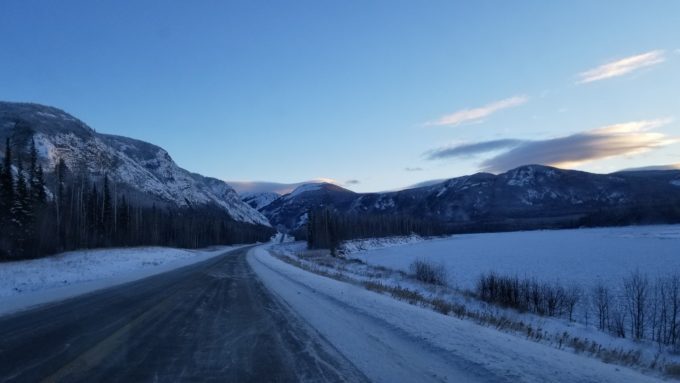
DESTINATION UNKNOWN
Okay, so it’s not quite unknown, but let me tell you from experience that you should not tell the Canadian Border Patrol Agent that you have neither a job, a home, or a plan. They become more than a little skeptical. Actually, as true as that conversation was, we didn’t have any problems getting through the border into Canada. In fact we really had a heck of a laugh about it that night.
Though we mostly stayed in the RV for the overnights, after our first true boondocking night in Glennallen we realized that we didn’t want to be running the ‘house’ battery that low with long nights of near continuous heater use. (We discovered later that the battery wasn’t any good.) We opted to look for places to pay for electric instead. This also had the by-product of ease for those nebulized treatments, sterilizing, microwaving, and video games for the boys!
For the most part we had no trouble finding somewhere for us to plug in. It was usually an Inn with an RV park that was closed for the season, but instead allowed us to use either an external outlet on the building or even a block heater station and a generic parking spot. It usually ran us around $20 but was as cheap as $10 and as much as $30 US. Be sure to call ahead, as it sometimes took a lot of searching, only to find one place that could work things out for us.
There were, however, two nights in which we opted for a rented room. First at cold Beaver Creek, and then later at Dawson Creek with the decision to secure some work time and internet. (We didn’t yet have a Hot Spot.) The laundry facilities, the first in 12 days and 1700 miles, (for our family of 3 that’s a lot of socks and underwear!) and free sauna in Dawson were a welcome bonus.
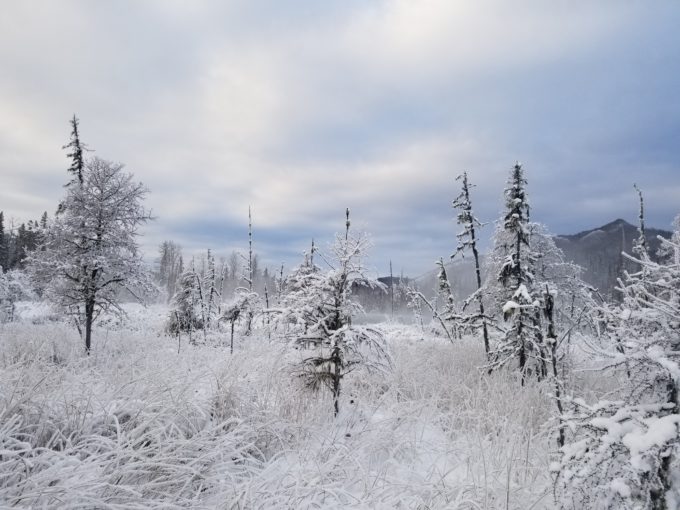
THE BEST HOT BATH EVER
The highlight of the trip so far? Without a doubt Liard Hot Springs. Sure, we enjoyed seeing the herd of wood bison, a galloping moose, and a coyote eating on the side of the road, but that really can’t compare to the beautiful and relaxing oasis that is a natural hot spring pool in the middle of the forest, in the middle of snowy December.
The ¼ mile boardwalk out was well worth it for a completely secluded,companion free swim in this luxurious pond. Like Japanese monkeys we soaked up the heat, floating to our hearts content. And not just once, but twice. We explored the pool when we first arrived in the late afternoon, happily trudging home to the RV in our snow gear in the dark, then again the next morning with a few brave birds chirping and the orange sun valiantly attempting to breach he tops of the trees. Did I mention it was Heaven? It was Heaven.
…Then we hit the road again.
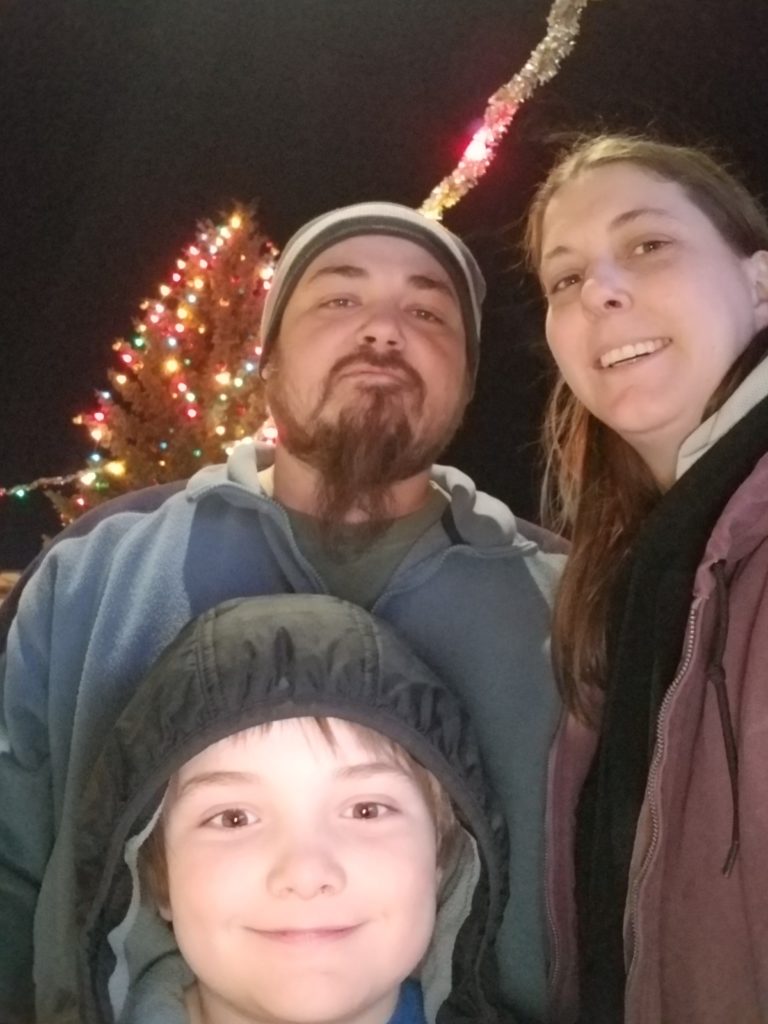
ROUND TWO
Now that I have a full grasp on the actual length of the journey from ‘the rest’ of the US to Alaska, would I undertake it again? Without question.
I am only a little bummed that we didn’t have the time to explore more things. For instance, there were plenty of things to do in Whitehorse, a definite secondary highlight of the trip, and of-course there would be a TON of things to do if we were to take the trip in summer.
Now, if we had to do it again dry camping in winter, hind-sight now tells me to invest in a good house battery before embarking. With better (or stronger) cold weather boondocking abilities it would allow us to take the time to explore more of each small area. I could have spent an entire extra day at Liard!
As for the honey bucket? We discovered that citronella candles do a really good job of de-odorizing and Costco sells trash bags, diapers, and hand sanitizer in bulk…. We’d be set.

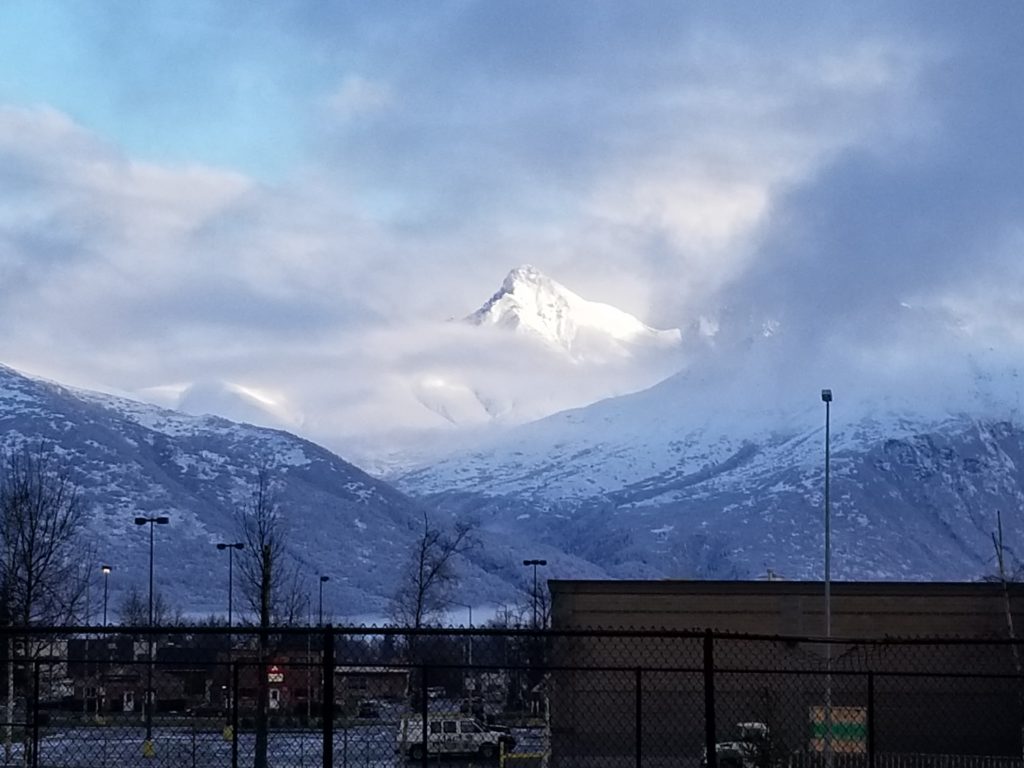

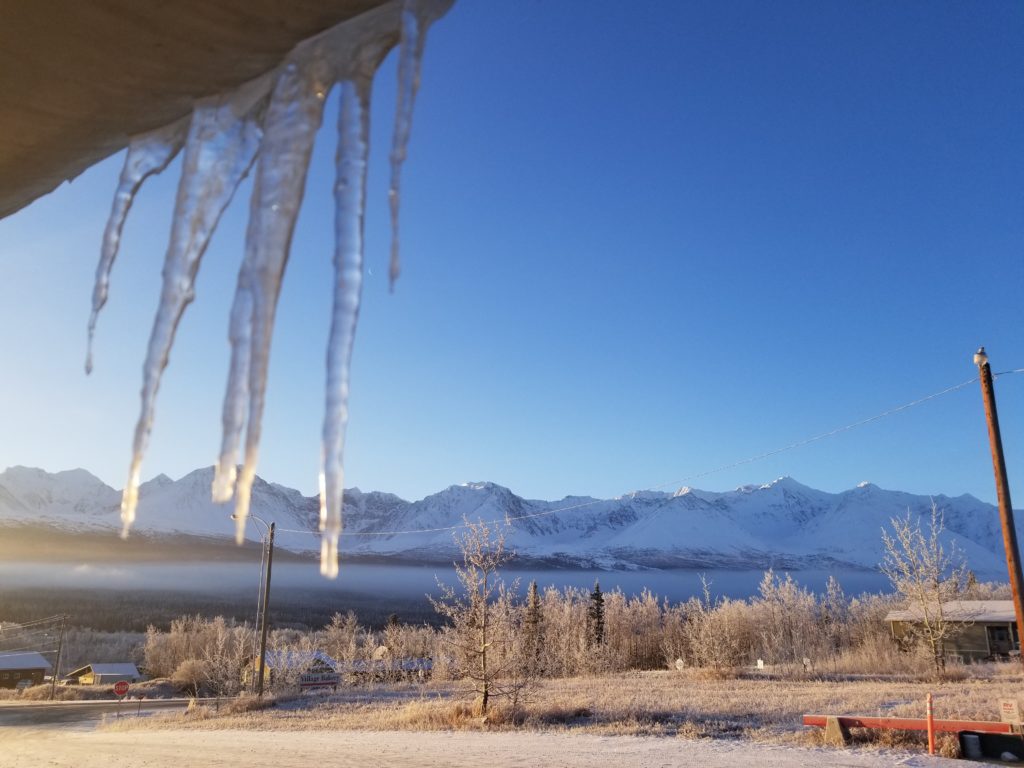
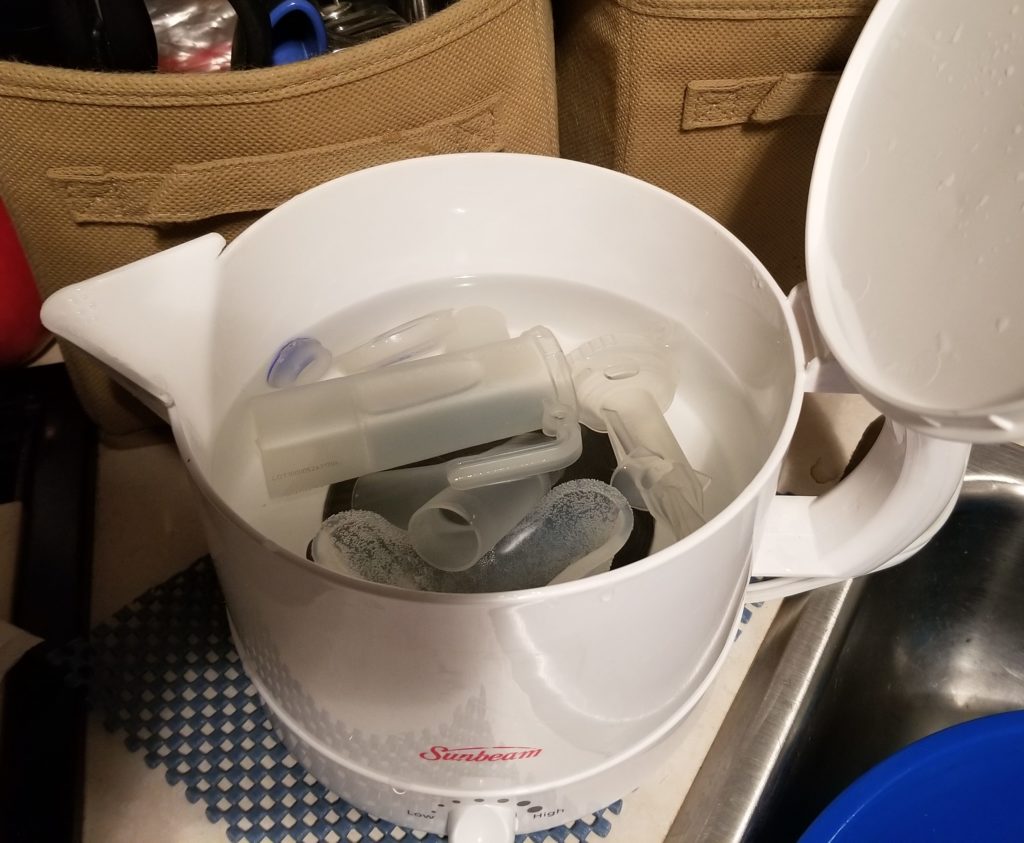
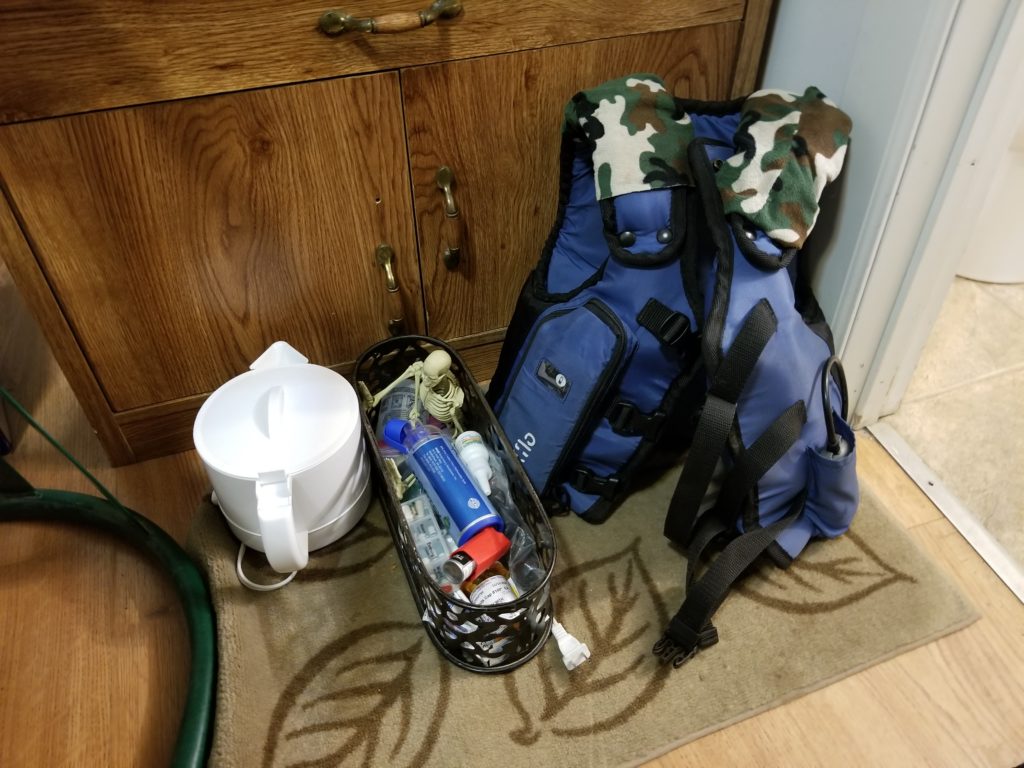
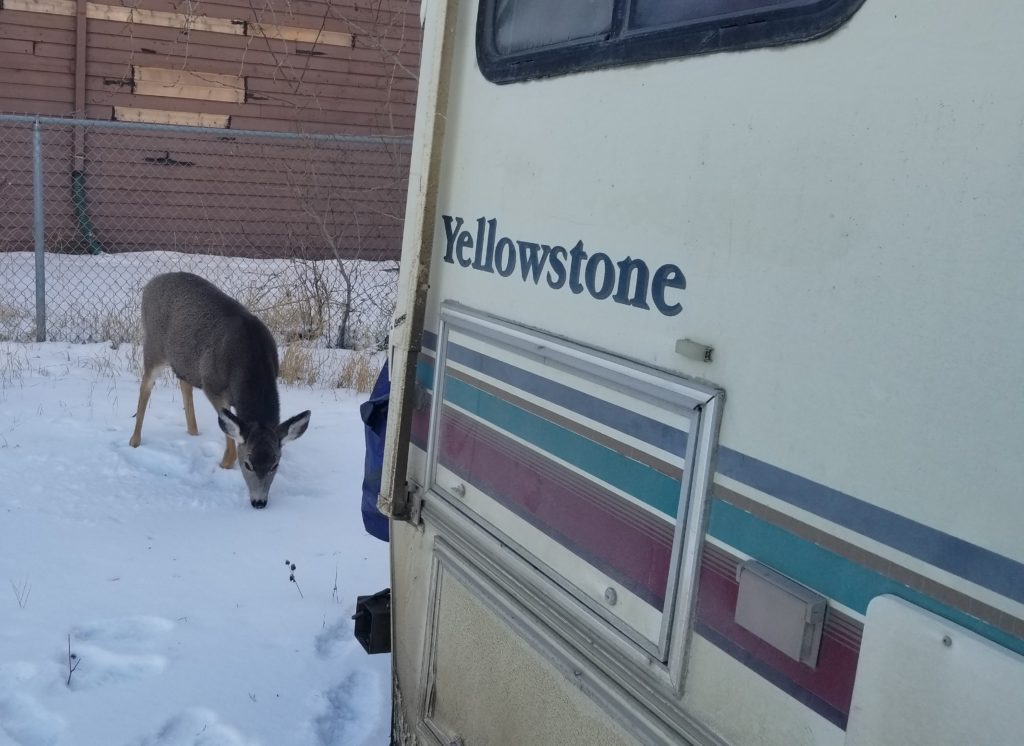
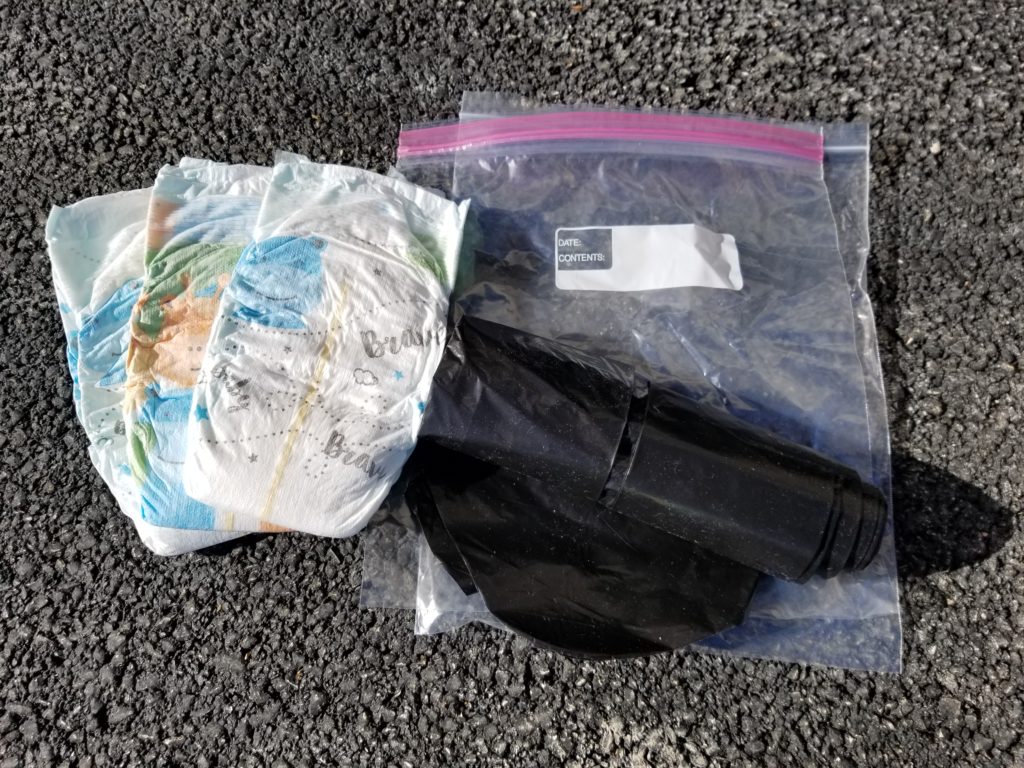
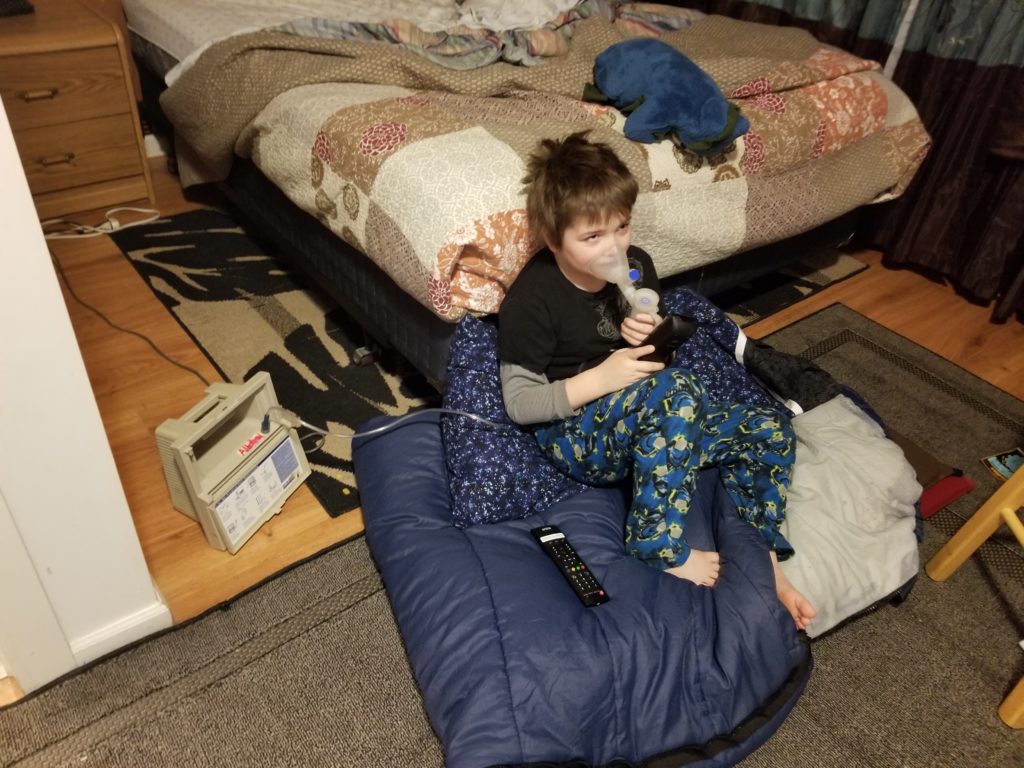
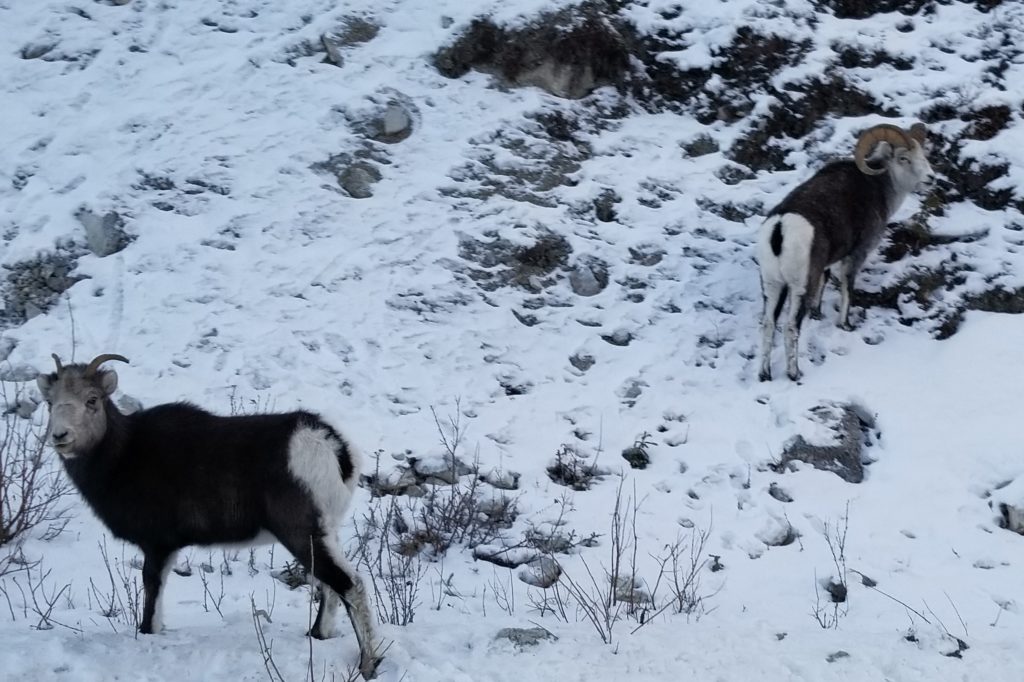
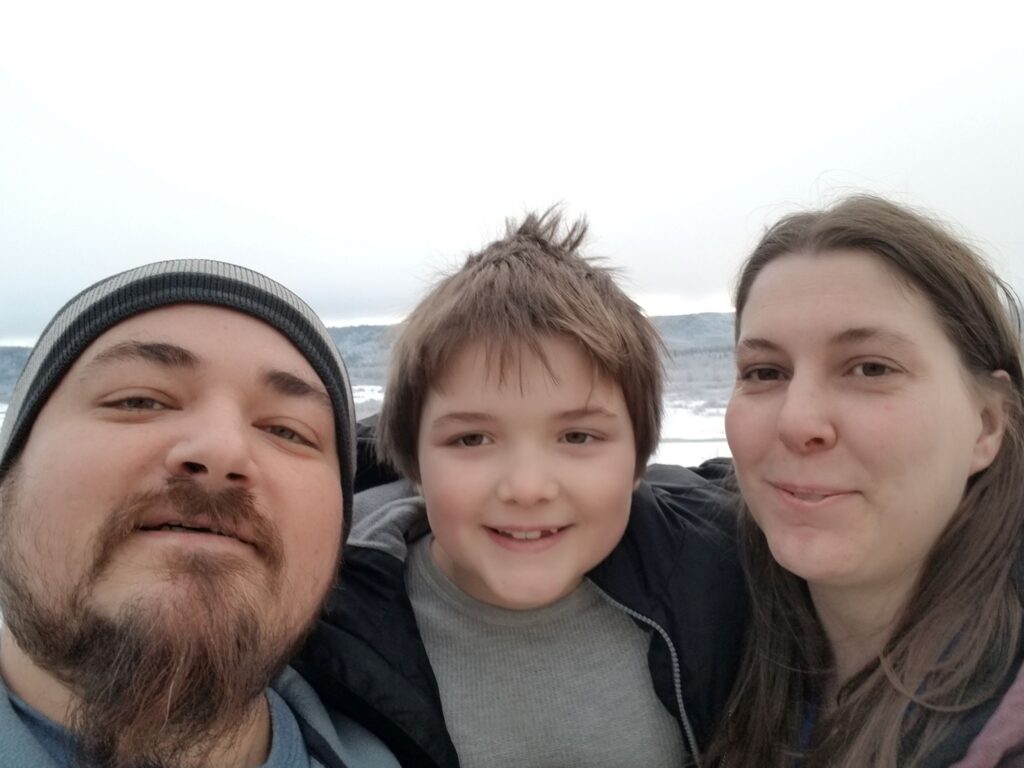
Post a comment